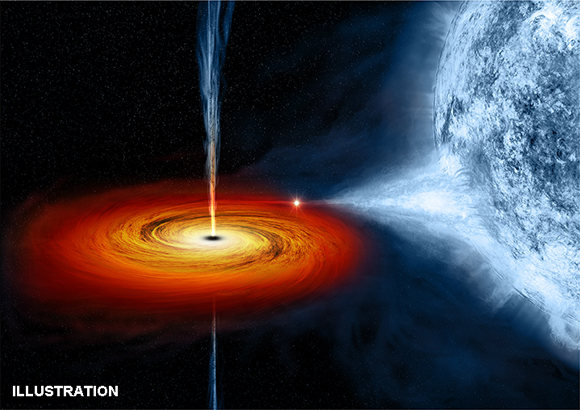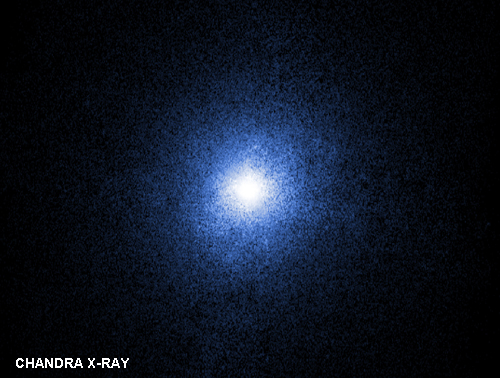
The Earth's atmosphere blocks harmful high-energy radiation from space, such as X-rays, from reaching the ground. To detect this radiation, astronomers have to go beyond the Earth's atmosphere.
In the 1960s astronomers didn't have powerful space telescopes to detect X-rays from space. Instead, they had to use scientific rockets that went above the atmosphere for only a few minutes before they came back down to Earth. Yet, using one of these rockets, astronomers managed to spot a black hole for the first time - an object that has so much material packed into a small region that not even light can escape its gravitational pull! This black hole is called Cygnus X-1.
But if nothing can escape a black hole, then how can it give off X-rays? The artist's drawing above shows what astronomers think is happening. The black hole is pulling material from a nearby massive, blue star towards it. This material forms a disk (shown in the artist's picture in red and orange) that rotates around the black hole, which astronomers can observe. The material in the disk will eventually either fall into the black hole or be expelled away in powerful jets of high-energy radiation.
Nowadays, astronomers can make detailed X-ray observations of the Universe using space telescopes. Recently, astronomers used several space telescopes to study the X-rays given off by Cygnus X-1 (see Chandra's X-ray image, below) and made an important discovery: The black hole is spinning about 800 times per second! That's close to the fastest that it is physically possible for it to spin!
Cool fact: Black holes have so much material packed into a small volume that you would have to squash the Earth into the size of a marble to create one!
Do you want to learn more about this topic?
Visit the Chandra field guide or send us your questions in an email: cxcpub@cfa.harvard.edu
In cooperation with Space Scoop: Bringing news from across the Universe to children all around the world. Universe Awareness and the Chandra X-ray Observatory
| Children & Online Privacy |




